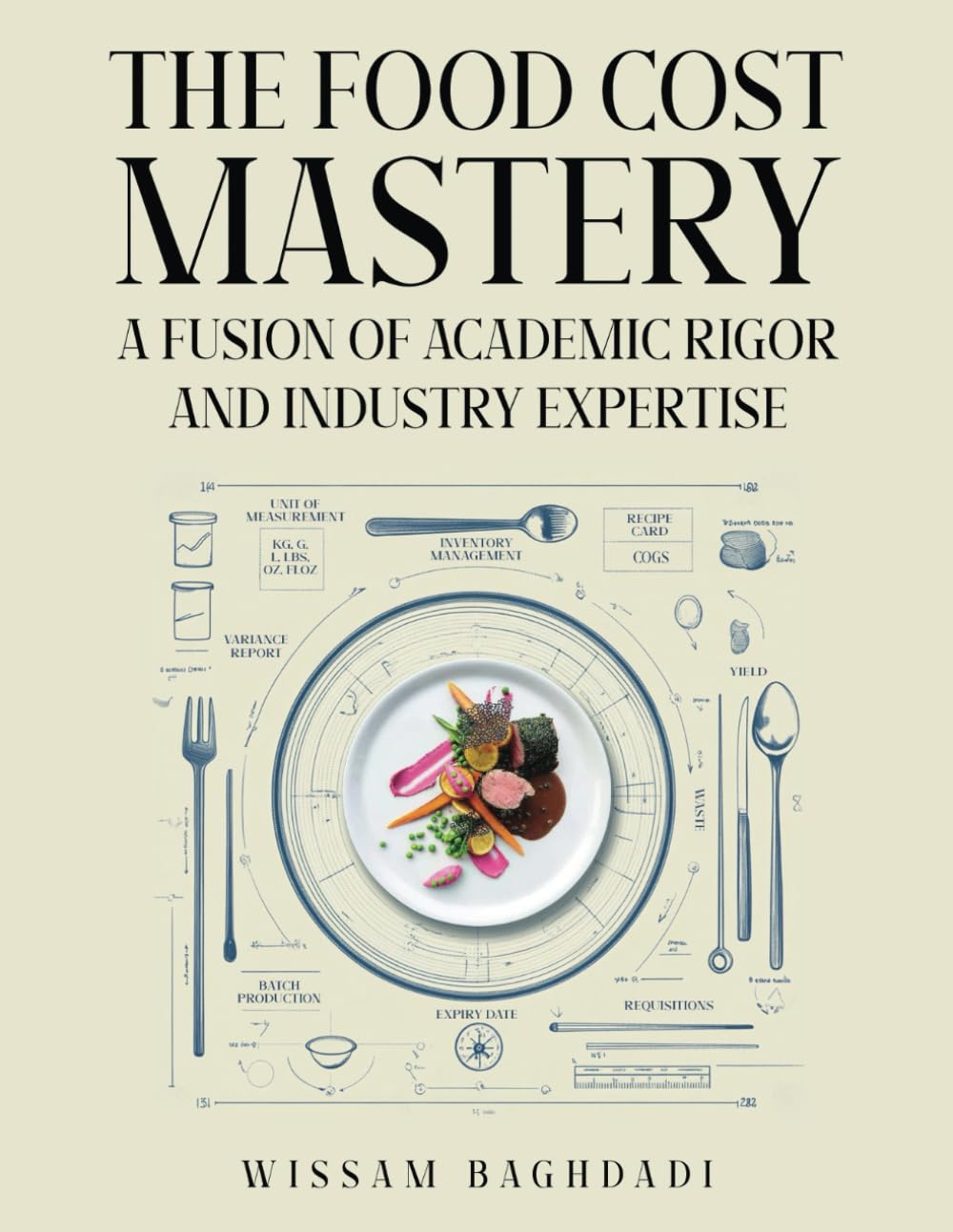
The restaurant industry is increasingly turning to cutting-edge technologies to tackle complex operational challenges. Among these innovations, artificial intelligence (AI) and machine learning (ML) are revolutionizing food cost management. In The Food Cost Mastery: Fusion of Academic Rigor and Industry Expertise, Wissam Baghdadi highlights the transformative potential of AI in optimizing inventory, pricing, and demand forecasting. These technologies empower restaurateurs to make data-driven decisions, improving efficiency and profitability.
AI in Inventory Management
Inventory management is a cornerstone of food cost control, and AI provides the tools to track stock levels, predict shortages, and minimize waste with unprecedented accuracy.
1. Real-Time Tracking
AI-powered systems integrate seamlessly with inventory management software, offering real-time insights into stock levels. These tools can automatically flag items nearing expiry or low quantities, ensuring timely replenishment and reducing waste.
2. Optimized Ordering
Machine learning algorithms analyze historical sales data and seasonal trends to suggest optimal order quantities. Baghdadi emphasizes the importance of balancing stock levels to avoid overstocking or understocking, which AI can handle efficiently.
3. Waste Reduction
By tracking waste patterns, AI can identify areas for improvement. For example, it might highlight consistent over-preparation of certain dishes, prompting adjustments in portion sizes or batch preparation.
AI-Driven Pricing Strategies
Pricing is a delicate balance between covering costs and remaining competitive. AI brings precision to this process, allowing restaurants to dynamically adjust prices based on real-time factors.
1. Demand-Based Pricing
Machine learning models analyze demand fluctuations to recommend price adjustments. For instance, during peak hours or special events, higher prices can maximize profitability without alienating customers.
2. Competitor Analysis
AI tools can scan competitors’ menus and pricing strategies, providing actionable insights to position your offerings effectively. Baghdadi stresses that pricing adjustments should align with gross margin goals to maintain profitability.
3. Personalized Discounts
AI can segment customers based on purchasing habits and suggest targeted promotions. For example, loyal customers might receive discounts on their favorite dishes, encouraging repeat visits.
Improving Demand Forecasting
Demand forecasting has always been a challenge for restaurateurs, but AI brings a level of accuracy that manual methods can’t match.
1. Seasonal and Event-Based Predictions
Machine learning algorithms analyze historical data alongside external factors like weather, holidays, and local events. Baghdadi notes that accurate forecasts help align inventory levels and labor scheduling with anticipated demand.
2. Menu Adjustments
AI insights can guide decisions about introducing or retiring menu items based on predicted demand. For example, a system might recommend adding more plant-based options during Veganuary, catering to temporary but significant customer trends.
3. Staffing Optimization
AI-driven forecasts can inform labor schedules, ensuring optimal staffing levels during busy periods while avoiding overstaffing during slower times.
Real-World Applications
Baghdadi shares how AI systems have been implemented in his own operations to optimize processes. One example includes using AI-powered inventory tools to monitor ingredient usage in real time, leading to a 20% reduction in waste. Similarly, demand forecasting helped anticipate peak sales periods, ensuring adequate stock levels and staff availability.
Artificial intelligence and machine learning are redefining food cost management, offering restaurateurs a powerful toolkit for optimizing inventory, pricing, and demand forecasting. As outlined in The Food Cost Mastery, these technologies enable data-driven decisions that improve efficiency, reduce costs, and enhance profitability. The future of restaurant management is here, and AI is leading the way.